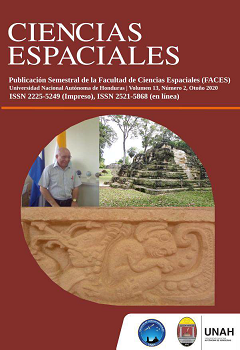Changes in the lunar series: a rule of the thumb in Cobá
DOI:
https://doi.org/10.5377/ce.v13i2.11261Keywords:
Cobá, Lunar Series, Uniformity PeriodAbstract
Cobá became an active and innovative center in lunar and calendric studies under the rulership of Lady K’awiil Ajaw (640< 682). The author argues that the scribes utilized the cycle of 11960 days as a “role of thumb” to quickly perform retrospective lunar computations attributed to the era day texts at Cobá. In consequence, He proposes the Maya realized that the date 9.11.0.10.0, which records the number of days since the start of the Maya era in 13.0.0.0.0, also commensurates with the lunar cycle of 11,960 days.
Downloads
479




